- Books Name
- class 7 Mathematics Book
- Publication
- ReginaTagebücher
- Course
- CBSE Class 7
- Subject
- Mathmatics
Chapter 2
Fractions and Decimals
Proper and Improper fractions
Types of Fractions
There are three major types of fractions
Proper Fraction
Improper Fraction
Mixed Fraction
Proper Fractions
Proper Fraction
Fractions where numerator is always smaller than the denominator.
It's called proper because the number of region will always be lower than the total number of region. Fore.g.1/3,1/6,2/7,9/10 and so on.
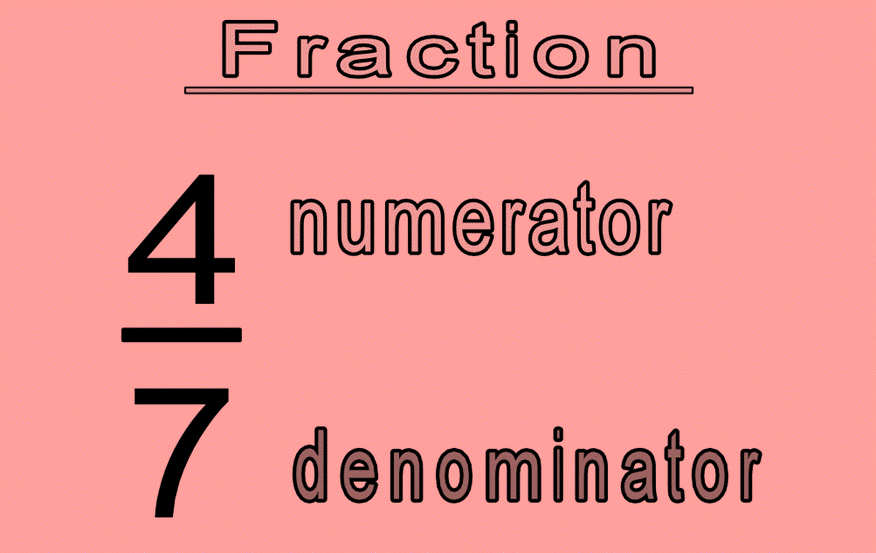
The value of a proper fraction will always be lower than 1.
Improper Fractions
Fractions where numerator is always further than the denominator.
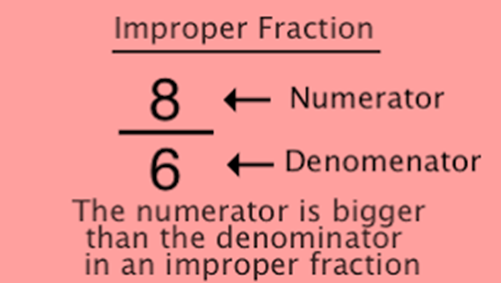
It's called improper because the number of region will be more than the total number of region. Fore.g.5/3,9/6,8/7,
The value of a proper fraction will always be more than 1.
Mixed Fraction
Fractions where there's a combination of a whole and a fractional part. e.g.
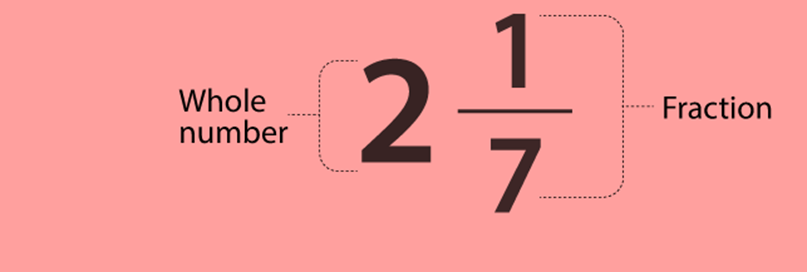
All Improper fractions can be expressed as mixed fractions
Like and Unlike Fractions
Like fractions are fractions with same denominator. For eg ½,15/2,19/2 and so on.
Unlike fractions are fractions with different denominators. Fore.g.16/5,7/8, ½,2/5,2/10.
It's important to note that like and unlike fractions are decided only on the base of denominator. The value of numerator doesn't count.
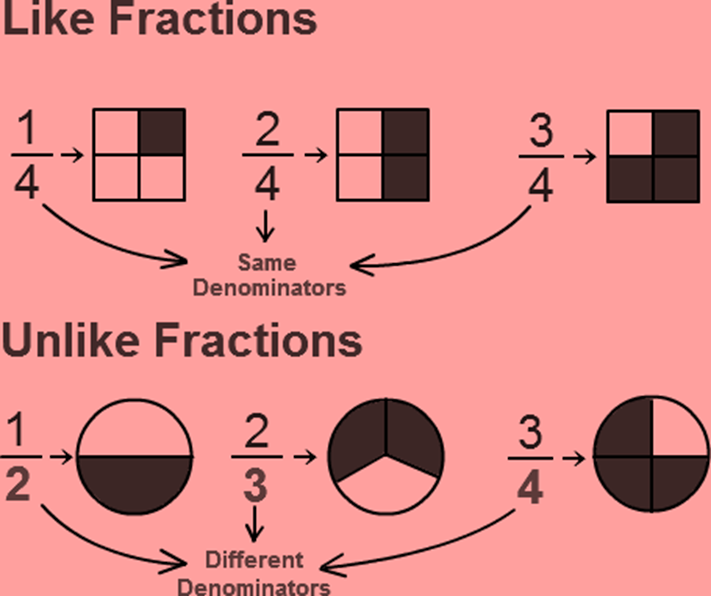
Equivalent Fractions
Equivalent fractions are fractions which represent the same number.
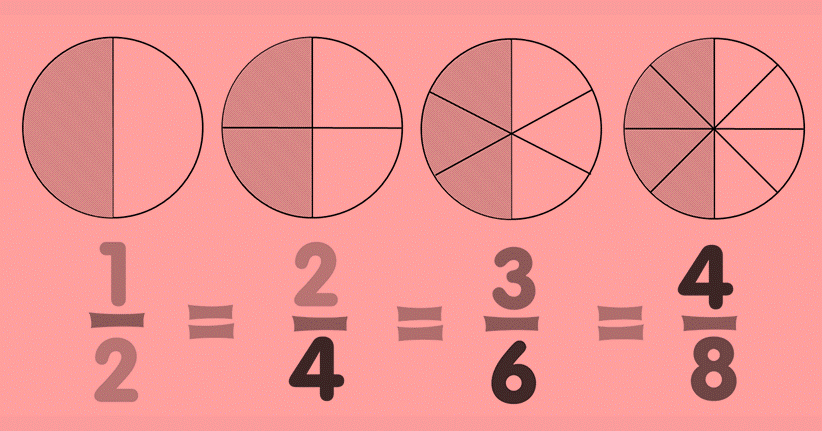
e.g. Dipu divides the pizza into 2 equal halves and eats one half of it. Bholu divides the same pizza into 4 equal halves and eats two region of it.
Pizza Share eaten by Bholu = 2 region out of 4 = 2/4. This can be further reduced to get = ½ = 0.5
Pizza Share eaten by dipu = 1 part of out of 2 = ½.
½ = 0.5.
therefore, although the fractions are2/4 and1/2 but they represent the same numbers. Hence they're equivalent fractions.
In order to make equivalent number, we've to multiply both the numerator and the denominator by the same number. For eg we get the following fractions when we keep on dividing both the numerator and the denominator by the number 2.
These fractions are equivalent since all of them can be reduced to the simplest fraction- ½.
Equivalent fraction can also be formed by separating both the numerator and the denominator by the same number.
It's important to note that the number by which we divide has to be similar that the number divides both the numerator and the denominator ideally.
accordingly, we can first find the HCF of the numerator and the denominator further divide them by the HCF.
These fractions are equivalent since all of them can be reduced to the simplest fraction- ½. Comparing Fractions
Comparing Like Fractions
In like fractions, the denominators are the same. So, only numerators are compared.
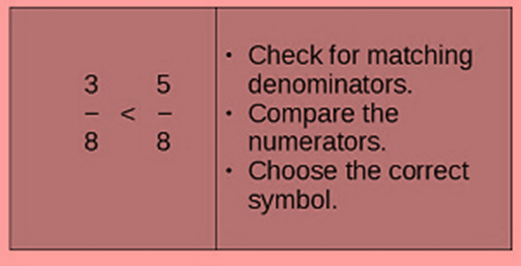
The one with bigger numerator is the bigger fractions.
e.g. ¾>1/4
Comparing Unlike Fractions
In unlike fractions, denominators are different.
primarily, we try and make the denominators same.
This is done by converting fractions into equivalent fractions. To do this, the LCM of different denominators.
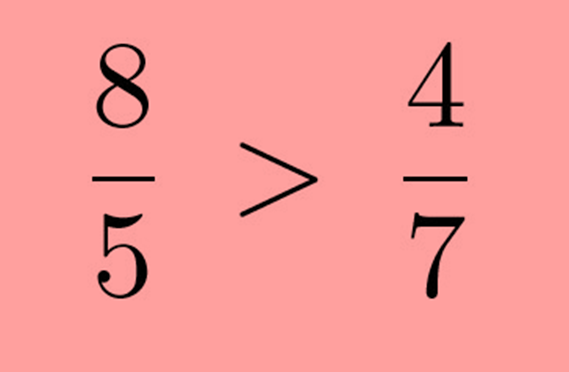
Each fraction is converted into a form like that the LCM as the common denominator of both the fractions.
Comparison of the matching fractions attained can be done by comparing the numerators.
e.g.
LCM of 3 and 4 = 12
Multiply Numerator and denominator of1/3 by 4 similar that the equivalent fraction has 12 in the denominator
1 *4/3 * 4 = 4/12
Multiply Numerator and denominator of2/4 by 3 similar that the equivalent fraction has 12 in the denominator
2 *3/4 * 3 = 6/12
Since the denominators are the same, equating the numerators we get
<6/12
thus,1/3<2/4
Problem Compare the fractions a) 3/ b and5/6 b)1/7 and1/4
result
and5/6 are like fractions because they've common denominators.
5 is greater than 3, so5/6 is more than3/6 and ¼ are unlike fractions.
primarily, we try and form the denominators equal.
This is done by converting fractions into equivalent fractions. To do this, the LCM of different denominators.
The LCM of 7 and 4 is 28. We get
1 *4/7 * 4 and 1 *7/4 * 7
4/28 and7/28
These are like fractions now. Comparing the numerators, we get
<7/28.

 Param Publication
Param Publication
 ReginaTagebücher
ReginaTagebücher
